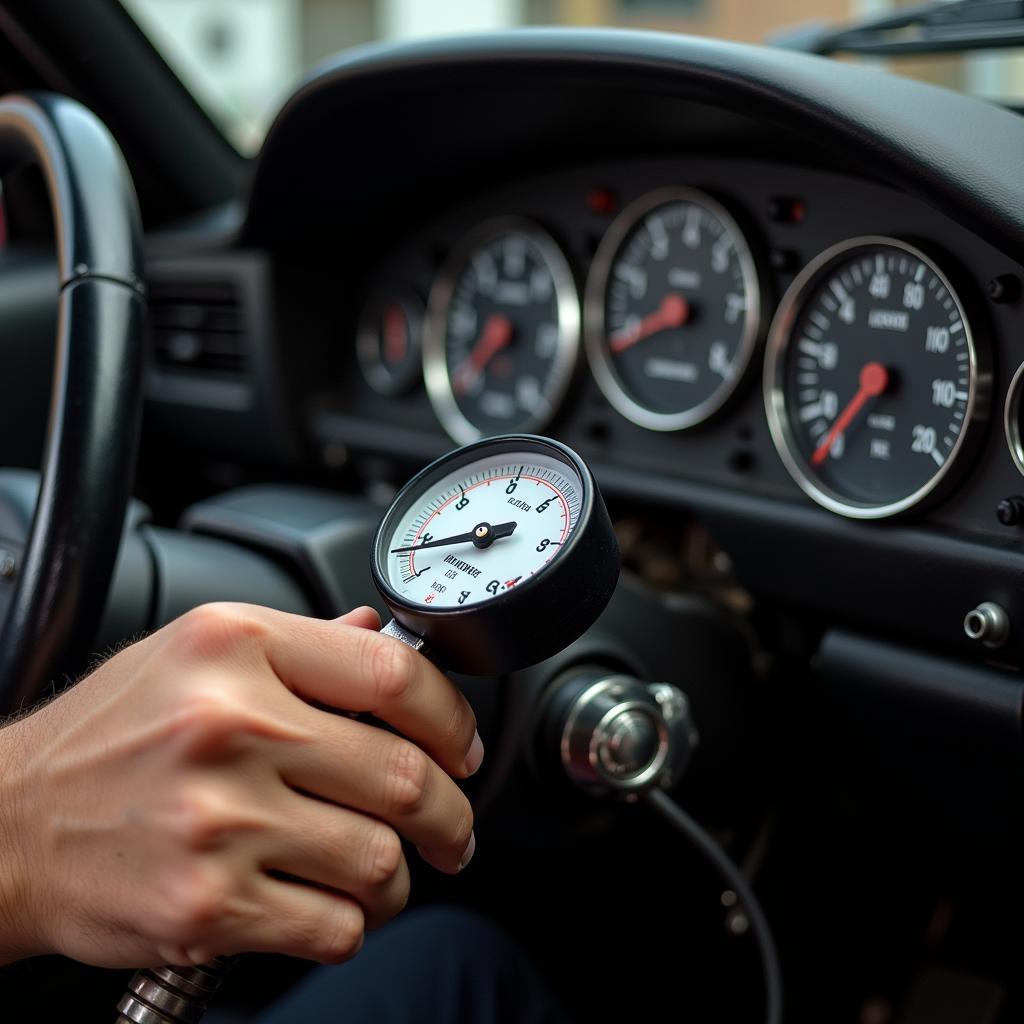In the not-so-distant past, diagnosing car problems often felt like a guessing game, even for experienced mechanics. “Old-fashioned car diagnostic” meant relying on a mechanic’s intuition, a handful of rudimentary tools, and a lot of trial and error.
The Days of Limited Technology
Before the rise of sophisticated onboard computers and diagnostic equipment, mechanics relied heavily on their senses. Here’s a glimpse into the world of old-fashioned car diagnostics:
- Visual Inspection: Mechanics would meticulously examine the engine bay, looking for loose wires, leaks, worn belts, and other visible signs of trouble.
- Listening for Clues: Using a stethoscope or simply their trained ears, they’d listen for unusual noises coming from the engine, transmission, or other components, trying to pinpoint the source of the problem.
- Checking the Fluids: Oil, coolant, brake fluid, and transmission fluid were all carefully checked for color, consistency, and level, as these could indicate potential issues.
- Test Drives and Intuition: Mechanics would often take the car for a spin, paying close attention to how it handled, accelerated, and braked, relying on their experience to interpret the car’s behavior.
 Mechanic using analog gauges and meters for car diagnosis
Mechanic using analog gauges and meters for car diagnosis
While these methods might seem primitive today, they demanded a deep understanding of car mechanics and years of hands-on experience. A skilled mechanic could often identify and fix problems with remarkable accuracy using these time-tested techniques.
The Evolution to Modern Car Diagnostics
The introduction of electronic engine management systems in the 1980s marked a turning point. Cars started generating valuable diagnostic data that could be accessed through a standardized interface. This paved the way for:
- On-Board Diagnostics (OBD): OBD systems, now standard in vehicles, act as the car’s internal monitoring system. They continuously track the performance of various components and store diagnostic trouble codes (DTCs) when malfunctions are detected.
- Diagnostic Scan Tools: These electronic tools, ranging from basic code readers to advanced professional scanners, can access the OBD system to retrieve and interpret DTCs, providing mechanics with a starting point for their diagnosis.
 Mechanic using a laptop with diagnostic software to analyze car data
Mechanic using a laptop with diagnostic software to analyze car data
Modern car diagnostics have significantly reduced the time and guesswork involved in identifying problems. Mechanics now have a powerful arsenal of tools at their disposal, allowing them to:
- Pinpoint Problems with Precision: DTCs provide specific information about the nature and location of faults, making diagnostics more accurate.
- Access Real-time Data: Mechanics can view live data streams from various sensors, monitoring engine parameters, emissions, and other critical data points while the engine is running.
- Perform Advanced Tests: Modern diagnostic tools enable mechanics to run tests on specific components, such as actuators, sensors, and modules, to isolate and verify issues.
The Future of Car Diagnostics
As car technology continues to advance at a rapid pace, so too will the methods and tools used for diagnostics. The future likely holds:
- Increased Connectivity: Cars are becoming more connected, allowing for remote diagnostics and over-the-air software updates.
- Predictive Maintenance: Data analysis and machine learning will enable proactive identification of potential issues before they become major problems.
- Augmented Reality (AR) and Virtual Reality (VR): AR and VR technologies have the potential to revolutionize diagnostics by providing mechanics with interactive, real-time guidance and visualizations.
Conclusion
Old-fashioned car diagnostics, while effective in its time, has largely been replaced by technology-driven approaches. The shift towards electronic systems and sophisticated diagnostic tools has made the process faster, more accurate, and less reliant on intuition. As cars become increasingly complex, staying at the forefront of diagnostic technology will be crucial for mechanics and enthusiasts alike.

Leave a Reply